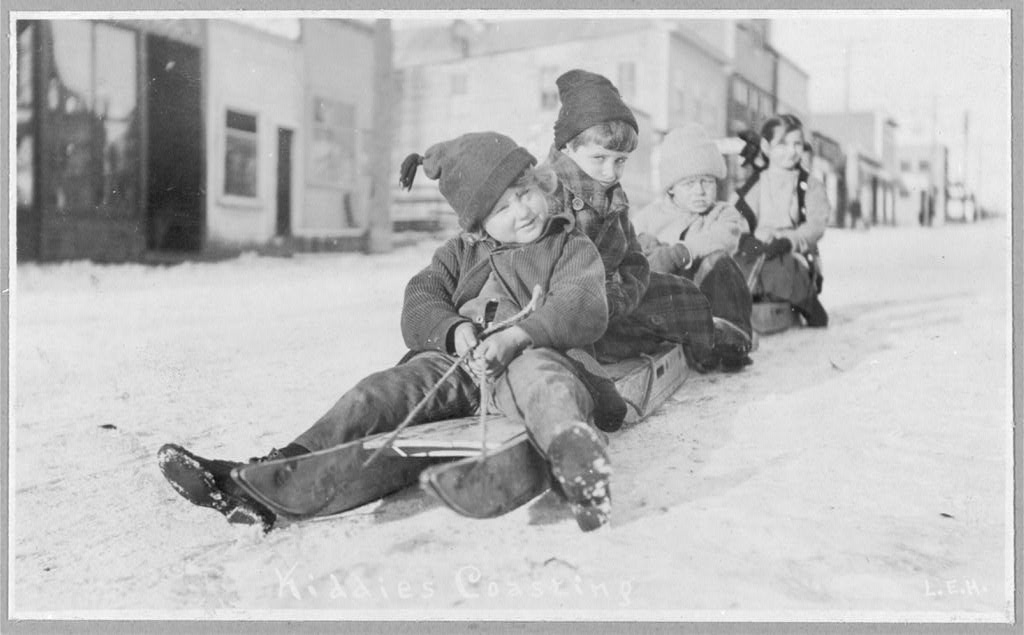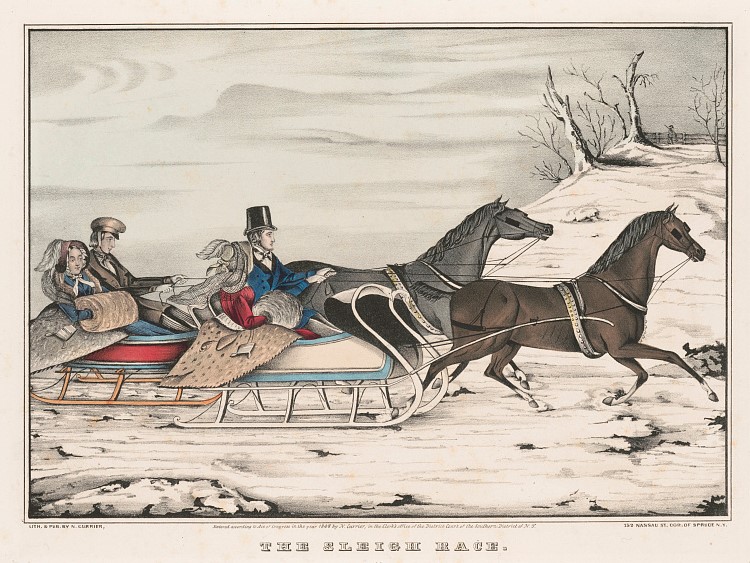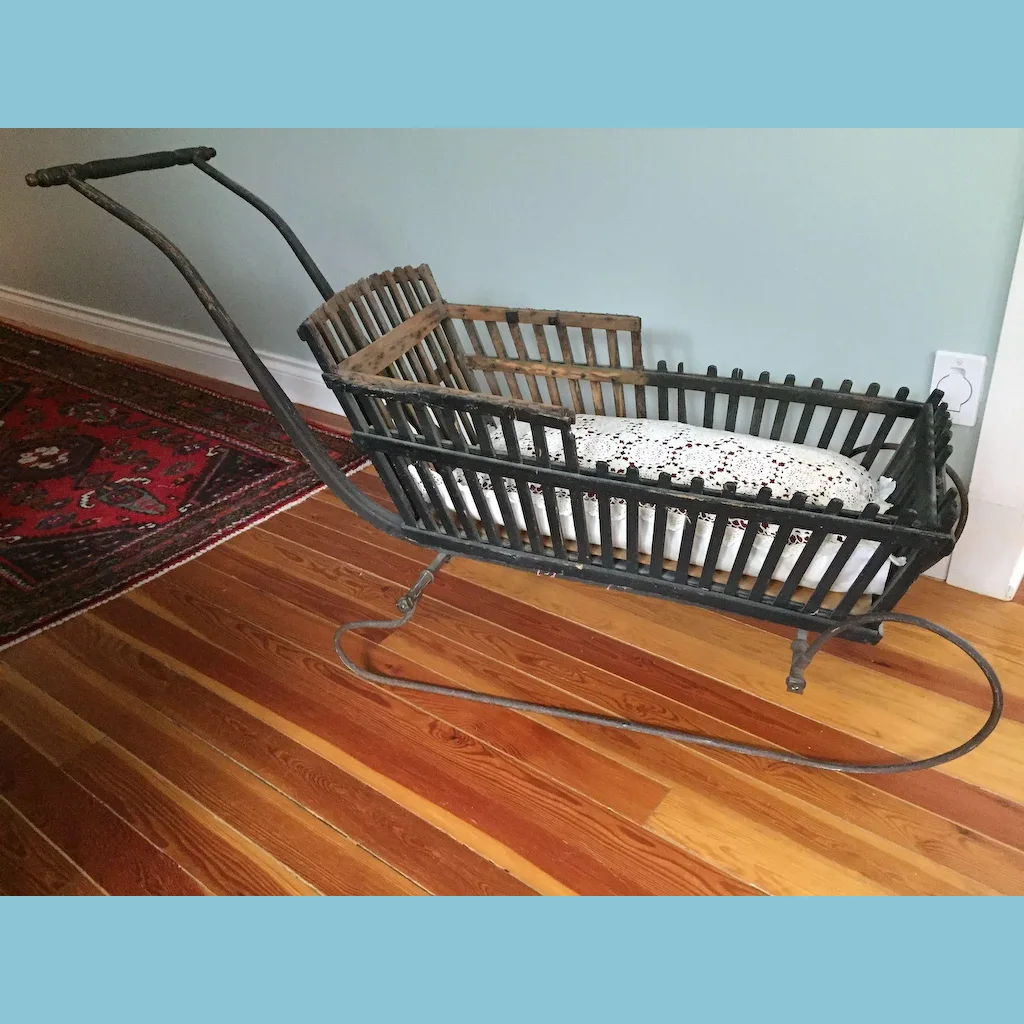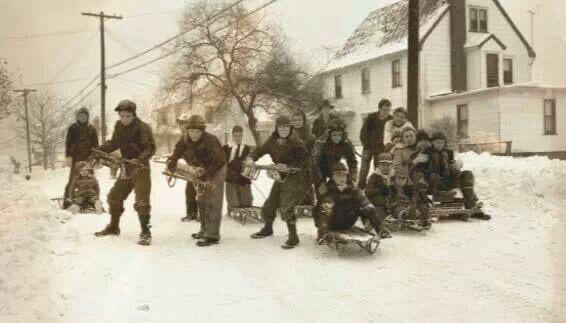
January, 2024 and over the last three days, a winter storm has blown through my state of West Virginia and up the East Coast. The storm was strong and fierce in some states and not so bad in others. My town of Fairmont, West Virginia, ended up with about four inches. The temperature is about 17 degrees. Sledding, if bundled up well, would be a favorite pastime for children of all ages.
In my blog today, I will take you back to the early times of the 1900s. What the weather was like in my hometown and in the winter time, and how everyone was able to survive the severe cold and big snows. As you read this, try to remember what your town was like in the winter and how you were able to get through it. In the comments below, I would love to hear how your winters were spent.
Major winter Arctic outbreaks have been frequently mentioned in local & national weather history. Since 1850, the 1852, 1856, 1857, 1864, 1873, 1894, 1895, and 1899 outbreaks are all usually regarded. Since 1900, the 1905, 1918, 1936, 1951, 1963, 1977, 1985, 1989, and 1994 outbreaks are all regarded as significant in the annals of weather history.
However, there is often less mention of the great early January 1884 outbreak. The strong snowstorm raged across the state and ravaged all towns by taking telegraph wires down, making roads impassable. The winds brought trees down, and essentially, the city was a ghost town. Winters were always hard here, but this storm caught the townspeople off guard, and it was nearly two days to get things back to normal.
The next event would happen in April, the springtime of 1898. No mention of a storm to come, the clouds drew dark and the air cooled and later on four and a half inches of snow was on the ground and everything starting to wake up to boost into bloom for spring had been stunted a little.
I’m sure the kiddos loved all this snow. To look at the area, I can see sled riding on the hills, snowball fights, and general fun going on all over the area.
For thirty-six hours straight in March of 1902, Fairmont was bombarded with wet, heavy snow. With people used to traveling by train, I’m sure they were distressed when all travel was at a halt. All along the lines, such as in the Paw Paw area, people turned out to help dig the rails out by hand. No machines then came in and took it away. The good thing was they could throw the snow out onto the riverside to melt. So how did people travel from place to place when it was like this? They would go to the local livery stable, which kept a supply of runners ready for just this occasion. The livery owners would swap out the wagon wheels for hub runners. They were like the runners on sleds, yet bigger.

To keep the occupants warm as you ride, a warm fur blanket or wool covering was provided. What would you use if only a baby were with you to do the shopping? They made special carriage sleds just for this purpose. It was a time for inventions, so they even made sleds to help get your purchases home safe and sound.


I would imagine that these were invaluable to the citizens of the era.
Winter weather was almost assured every year, some years heavier than others. The year 1910, in the month of December, was chillier and icier than most. It was said to have been predicted by a citizen using the “Goose Bone Method.” Here is the explanation of what that is from the Old Farmers Almanac,
Grandpa would take the bone and put it on a shelf to dry, keeping an eye out for the coloration that would follow. If the bone turned blue, black, or purple, a cold winter lay ahead. White indicated a mild winter. Purple tips were a sure sign of a cold spring.
Well, that year, it must have turned black because starting from Thanksgiving onward, Marion County was pretty much a huge snowball. Starting from Thanksgiving till the Sixth of December, the snow left around 8-12 inches on the ground; some stated that there was more snow on the ground now than in the last ten years. It took Fifty Trolley Co. men working all day to shovel and clean the tracks. Travel was at a standstill. No cars were able to handle the weather, so the shops turned their wagons into sleds pulled by horses and delivered goods to the reachable.
Just as the town was getting cleaned up and running again, “Old King Weather” hit the city with an even heavier and colder blast. At Five o’clock on December 9th, the thermometers in town read two above zero; half an hour later, one below zero held, and it finally settled at two below at midnight. No person even thought about traveling or leaving the comfort of home. The town surely shut down and opened even later the next day because of the very thick fog that spread everywhere. When it lifted, the snow returned. They say that the coldest spot in town was on the east side of the South Side Bridge.
Of course, the residents of Fairmont were hardy stock. Most were raised in the area and survived many difficult weather challenges. Winter just happened to be one that they had to prepare for. The heavy snow of December 9th was a wet snow and wasn’t much good for playing in; plus, unless you had the proper clothing, going out sledding wasn’t an option, but in the next three days, a more suitable fluffy snow blew in and with this on top of the previous snow packed down made a sled riders dream.
Sleds of the era varied, but mostly, they were Red Rider sleds with the runners painted red. I had one growing up, and boy, could it fly!
Kids all over town in 1910 were out every chance they got to fly down hills, on the streets, and even it was said on the sidewalks. I’m sure they had fun. Sledding wasn’t the only amusement to keep you busy in the Winter. The Monongahela River would freeze over with a thick shelf of ice, and many would get their ice skates and zoom across the river. The fun that was had.


The winter of 1910 would finish up with not a whimper but a bang. A couple of days later, in the evening, around 6:30 pm, gale-force winds whistled and howled, going upwards of 50 mph as heavy snow fell. The winter of 1910 was one for the books. Yes, they did have a “White Christmas!”
1913 was the next big weather event in Marion County. A blizzard with gale-force winds paralyzed the county. All the lines in town went down with the heavy snow. Communication was cut off from the outside world.
The Monongahela Traction Co. had a car stuck with passengers on it from early in the evening, around 4:30, till 10:00 the next morning, when company men found them and dug them out. I imagine that was a very cold evening and a hungry one too. I doubt they had food, and I am not sure if the car had a wood stove on it. There was no school the next day; but if it was a Sunday, people would walk just to get to church. It was stated that some of the houses had drifts around them measuring 3-6 feet high.
One of the most detrimental storms to hit the county happened in March of 1917. The snow was a heavy precipitation that brought down parts of Fairmont. Everywhere you looked were blockades of snow. Storefronts were covered with mounds of snow, the wires in town were brought down, and some went into the river. No communication, even to the east side. Later that evening, the snow stopped, and rain and freezing drizzle started. The river was at flood stage. This caused the sewer drains to overflow with slop, which was wet and disgusting.
The next day men everywhere were digging out and clearing debris from their homes and helping the merchants dig out so they could open up their businesses. It was stated that the heavy snow that fell on the Watson building roof caused parts of it to collapse and would need to be fixed.

Train service was delayed, and interurban service ran with the help of snowplows and scrappers. They had to clear about 3-4 feet of snow to get things moving. No one ever rested when chores like these needed to be done. Men, women, and children all pitched in, and neighbors helped neighbors. In October of the same year, they had a spell where it snowed for twelve straight hours, and the town started their work all over again. The temperature dropped 47 degrees that day, starting at 81 degrees and plummeting to 34 degrees.
The last story I will relate to you about the winter weather causing a horrible time for Fairmont was in January of 1922. The coldest day in a while happened that day. The thermometers read seven below zero in town. This storm caused major problems with heating. The residents who converted to gas furnaces were having trouble getting enough gas to their homes because not enough gas wells had been dug to keep up with demand. It was stated in the West Virginian newspaper that residents did not even have enough gas to cook eggs. On Maple Avenue, there was only one house with a gas furnace; it was the warmest place on the street. The Monongahela Traction Valley Company was working as hard as they could to drill more lines every day so that this would never happen. Sadly it was not fast enough.
People who still used coal for their heat were better off as there was a good supply, yet with roads being impassable, they could not have any delivered or go to get it. The townspeople were cold.
In the Hoult area, most of the C&P Telephone lines and poles fell into the river. Monongah was closed off due to downlines and poles. The coal mines were closed because not enough workers could get through. Clients were calling with orders for coal, but none could be filled. My grandfather was a lineman for C&P Telephone, and I’m sure he was one of those men out there for hours or days trying to get everything back in order.
I’m sure as the years went on, even with bad weather, it got easier and easier to live through these events. I remember as a child of the ’60s, snow being on the ground pretty much from November to February some years ago, and yes, it was cold. We made the best of it by bundling up when we went outside. We still went to school, especially if you were a walker, and then home to play outside and sledding the hills. In those days, cars had chains on the tires to help with traction, and I can still hear them going over the brick streets in town. Good memories!
Thank you for stopping by to read my blog today. I hope it made you feel better about how we cope today with bad weather.
Remember this: “History, despite its wrenching pain, cannot be unlived, but if faced with courage, need not be lived again…………… Maya Angelou
